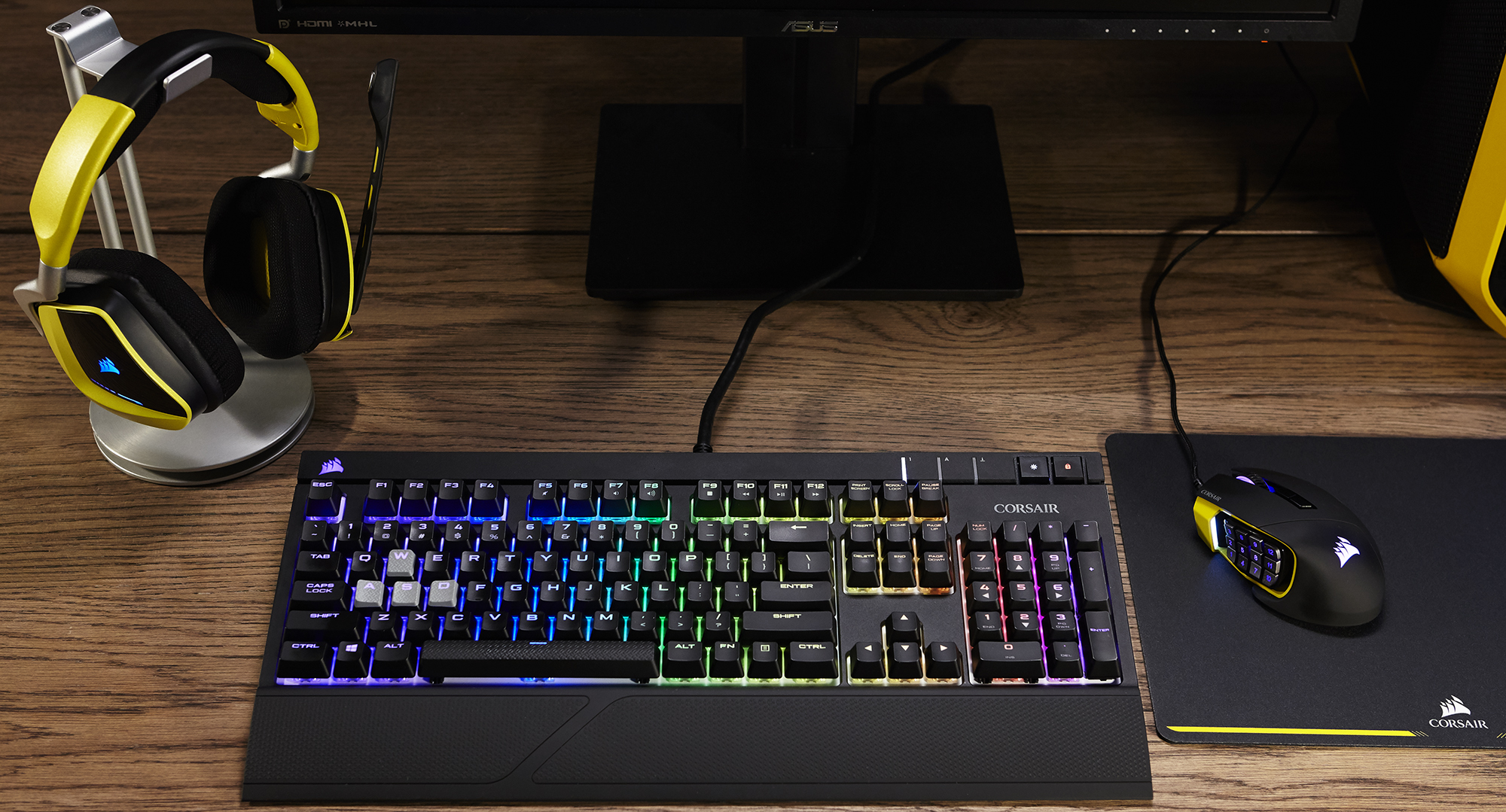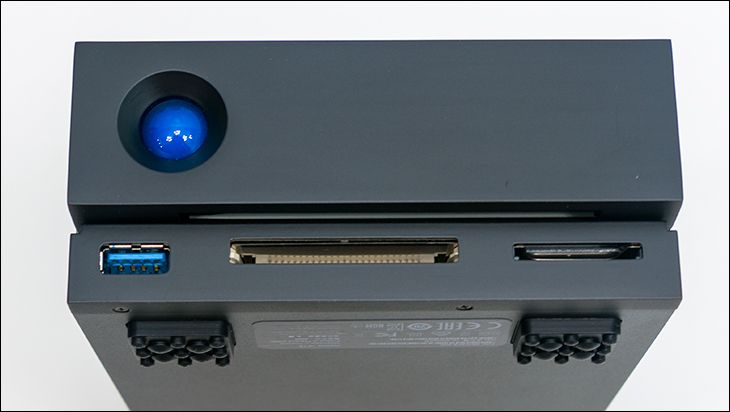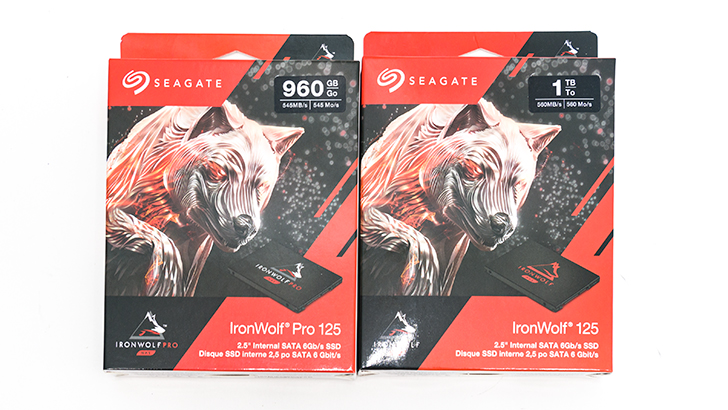
Both variants of the new IronWolf 125 series come in (basically) the same shipping container with only minor obvious differences – e.g. different label and slightly different information on the sides. Even though this can cause potential confusion in bricks and mortar stores we have no real issues with this. Both boxes are colorful, filled with a good assortment of information, and generally speaking are attention getting without being garish. Just pay attention before buying one… as otherwise you may have a bad day.
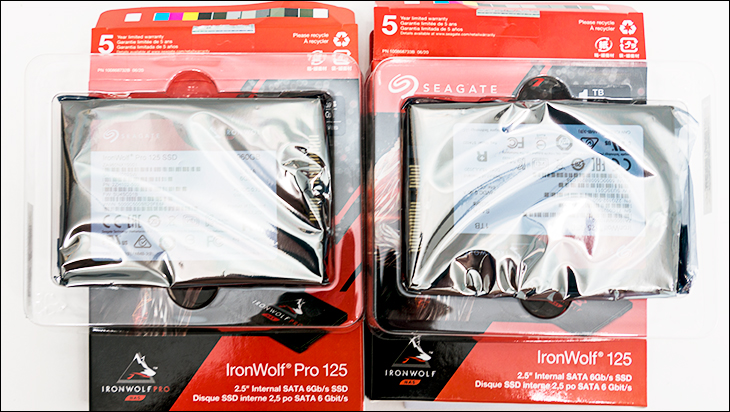
As they are basically the same cardboard boxes, it should come as no surprise that the internal protection is also the same. Consisting of a nice plastic tray, this configuration will absorb a good bit of blunt force trauma before allowing its contents to be damaged. As such, it may not survive full-on postal event from a disgruntled warehouse worker… it should survive the typical shipping bumps and bruises that occur between the warehouse and your home.

In typical Seagate fashion, the accessory is best described as ‘spartan’. So, if you are looking for goo-gaws, door hangers, case badges or other shiny bits ‘n’ pieces both models will fail to impress. We personally do not like such things as they needlessly add to the MSRP… and usually end up in the trash bin. Instead, you will find a small warranty pamphlet and another that goes over the details of the Rescue Services plan that comes with the drive. For both models, this means a good five-year warranty that includes Rescue Services for the first three years. For a few dollars extra you can extend this for the full five during the registration process. Where they differ in the warranty department is that the standard 125 model is rated for 1.4 Petabyte’s worth of writes + 0.7 Drive Writes Per Day (DWPD) and the IronWolf Pro 125 is good for a full DWPD and 1.75 Petabytes. Outside of enterprise scenarios we honestly doubt the typical buyer of either will run afoul of either of these generous ratings before the five-year mark is reached… and if you do you really should have been looking at 2-4TB’er capacity models which come with even bigger and more generous Total Bytes Written ratings.
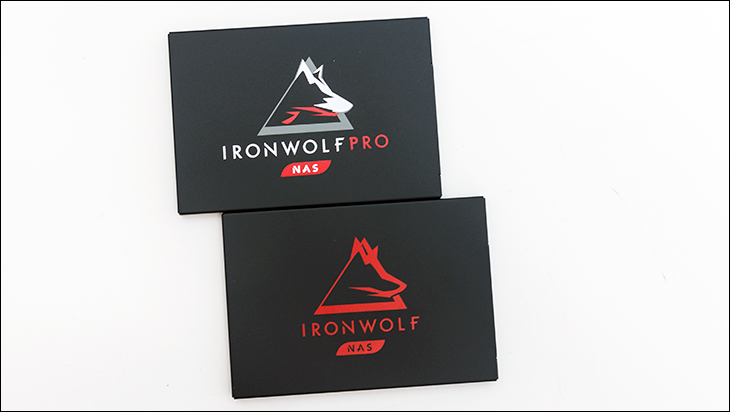
On first blush, for those that are intimately familiar with the previous IronWolf 110 series, the chassis of both 125 models will be a bit of a disappointment. The last generation IronWolf 110 SSD series came clad in a metal chassis that was thick enough to stop shrapnel, whereas the new 125’s are fairly thin. We say this, as both the old and new use the chassis as a heat spreader, and generally speaking the more metal there is the absorb heat the happier the internal components typically are.
The reality is a bit more nuanced and will come down to how the drive is used. For those that plan on using one of these inside a PC case (be it as a workstation or NAS) that lacks hot-swappable drive caddies… the ‘loss’ of the thick heat spreader will generally result in slightly higher temperatures. However, when used where they are meant to be used (in 2.5 or 3.5 metal hot-swap drive caddies) the opposite is actually true. The thinner metal of the new 125’s case, with heat pads instead of TIM or not, is simply more efficient at transferring the heat quickly to the caddy and using this greater surface area to act as a large actively cooled heat sink</>. Basically, the 110s thick metal case initially keeps the internals cooler than the 125s, but that thick metal means that temperatures stay higher under sustained loads compared to the 125s. As such we do not consider it a downgrade and rather a refinement that nets tangible real-world improvements… when used as intended.
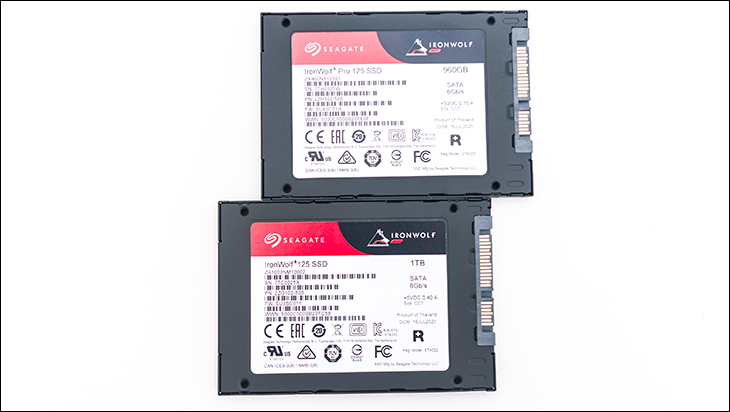
In either case, pardon the pun, both models come in the same all metal 2.5-inch, 7mm z-height, form-factor. The only difference will be the silk-screening process for the graphic on the top, and slightly different information label on the bottom. Basically, the only difference is the IronWolf Pro 125 series gets a two pass / 2-color silk screening process, whereas the standard IronWolf 125 only gets a single pass, single color graphic. We would almost never choose one over another just because one is slightly prettier than the other… but the IronWolf Pro 125 is more attractive looking. The combination of all black body with red and white graphic on the top is rather pretty to say the least.
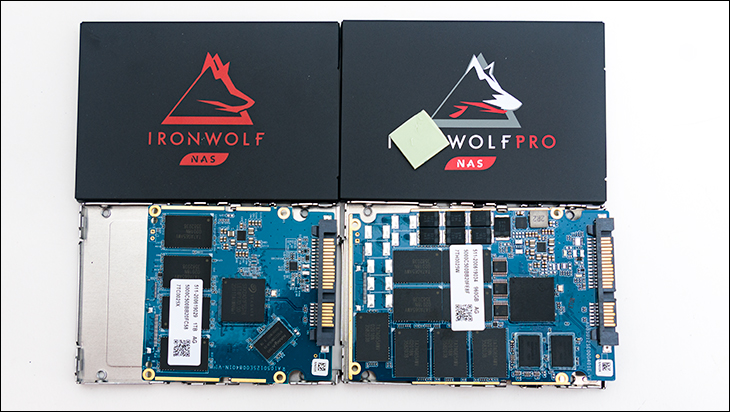
The last major point of commonality between the two variants of the IronWolf 125 series is the NAND. The last generation IronWolf 110 SSD series used excellent, for its time, Toshiba/Kioxia BiCS 3, 64-layer Toggle Mode 2.0 TLC NAND. The new IronWolf 125 series makes use of higher performance 96-layer Toshiba/Kioxia BiCS 4, Toggle Mode 3.0 TLC NAND. In addition to brining a 40% footprint reduction, this updated dual plane/section ‘folded’ design NAND also features much higher performance. To be precise Toggle Mode 3.0 doubles the bandwidth from 400MT/s (MegaTransfers per second) to 800MT/s. As an aside, this also reduces the erasure voltage needed from 1.8v in the previous generation to 1.2 volts. Lower voltage requires means even gentler erasure cycles… with less damage done to the NAND in the process.

The only difference between the two, from a NAND perspective, is that the standard IronWolf 125 1TB’er requires NAND ICs on both sides of its smaller PCB, whereas the Pro 125 960GB’er makes use of a longer PCB and thus can fit all four on one side of the PCB – making the IronWolf Pro 125 960GB (and smaller) single sided drives.

While both models also technically make use of the same controller architecture there are rather major differences between the two variants of Phison’s PS3112-S12 controller. The standard IronWolf 125 series uses the consumer orientated ‘standard’ S12 version (Seagate validated STXZA01F5578), whereas the IronWolf Pro 125 uses the enterprise orientated ‘Data Center’ S12DC variant (Seagate validated STXXA012318)… and thus the ‘DC’ in the name. Both versions are 8-channel, quad core (dual core, 32-bit ARM Cortex-R5’s + dual ‘CoXProcessor 2.0” co-processors) SATA controllers that boast of software level data loss protection. Both also make use of Phison’s LDPC version 3 ECC engine which can seamlessly correct up to 160bits (out of a 256KB data chunk) via its integrated hardware decoder, and upwards of 400bits (out of a 2K data chunk) via firmware… which is process intensive and will impact I/O performance – ‘four’ cores of processing power or not. They are also both TCG Opal encryption capable, but Seagate has not implemented it as the combination of real-time compression/decompression with real-time encryption/decryption was too much for the S12 controller to handle.
Where they differ is the DC variant of the S12 also adds in a hardware level of data protection in the case of unexpected power loss. Just like the Seagate IronWolf 110 series before it, this bad boy comes with a bevy of on-board supercapacitors that in the case of unexpected power loss can allow the S12DC controller the luxury of flushing its RAM cache to the NAND. Thus, ensuring that any in flight data is securely written and not corrupted if the power to the system is unexpectedly lost. Very, very few Solid State Drives come with this feature as it is both expensive and time consuming to build… and most times the software level protection against data corruption is ‘good enough’.
Intel were one of the first to see a need for Flushing In-Flight data in the case of unexpected power loss and over the years it first trickled down to nearly every SSD and SSD manufacturer out there… and then slowly dried up. It dried up because it costs a good chunk of a design teams budget to include. That is why FiF capable super-caps were replaced by ‘software’ with algorithms in the firmware telling the device to be super aggressive at not keeping data in its RAM cache buffer longer than needed and more advanced ECC to fix anything that did ‘break’. The Phison PS3112-S12DC does both. It has all the modern Phison algorithm tweaks that protect data, and then hardware level data protection for OCD levels of protection. This combination is rare and rarely seen outside of Data Center orientated models. Its inclusion on the IronWolf 125 Pro alone justifies not only the increase in expense over the standard model but its entire asking price at least twice over. So, if you take your NAS data seriously the IronWolf 125 Pro is one of the few sane choices available… and one of the few that will not cost you Intel DC model asking prices.
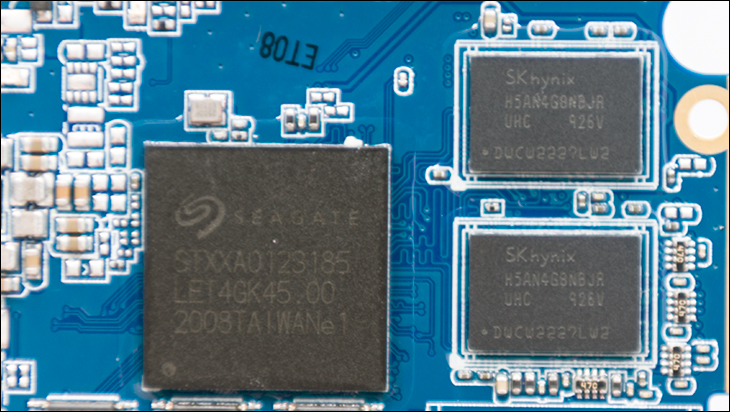
This hardware level data protection however is not the only addition. On top of this killer feature Seagate has also significantly changed things up on the firmware side compared to its non-Pro brethren (and why the firmware is incompatible with each other). These changes include much greater amounts of Over-Provisioning (OP), and why even though both have the same NAND capacity the Pro 125’s will be seen as having smaller seen capacity vs. the standard model. While yes, it is true that both models feature Seagate’s DuraWrite technology (which grew out of their SandForce IP acquisition) and thus compresses all data before it written to the NAND… a solid-state drive’s performance lives and dies by its ability to keep ahead of demand and make sure there are free blocks ready to be written to at all times. Remember, before a NAND block can be reused for new writes, it has to be erased and then and only then can it be written to. The more free blocks in a ‘virgin state’ there are, the longer a drive can sustain 100 percent I/0 demands before slowing down. Mix in the fact that more OP may mean less storage capacity ‘seen’ by the operating system but more replacement blocks ready to seamlessly take over for those that die and you have not only a SSD that is more protective, more capable, but also a longer lived one.

In testing the results for the Pro 125 960GB were… astonishing. Easily the most consistent and stable results we have ever seen from a SATA SSD rocking TLC NAND. In fact, we have seen MLC NAND drives perform less consistently. As you can see in the above image write performance, at 1 queue depths, is basically a flat line. A flat line for the entire capacity of the IronWolf Pro 125. Now that is impressive.
Some of this comes from the greater over-provisioning. Some from the fact that even when seen as ‘full’ the controller compressed the, admittedly easily compressible, data so there was still free blocks (which as an added bonus also significantly decreases write amplification)…. and some of it just due to the S12DC dedicating enough controller cycles to ‘housecleaning’ duties to keep ahead of demands.
This consistency and stability is why Seagate does not quote ‘up to’ specifications for their Pro variant of the IronWolf 125 series. Instead they guarantee minimum performance levels that the drive will meet and usually exceed. For those not used to dealing with business orientated drives this may seem like the Pro 125 is ‘slower’ than the non-Pro variant. In reality… it is complicated.
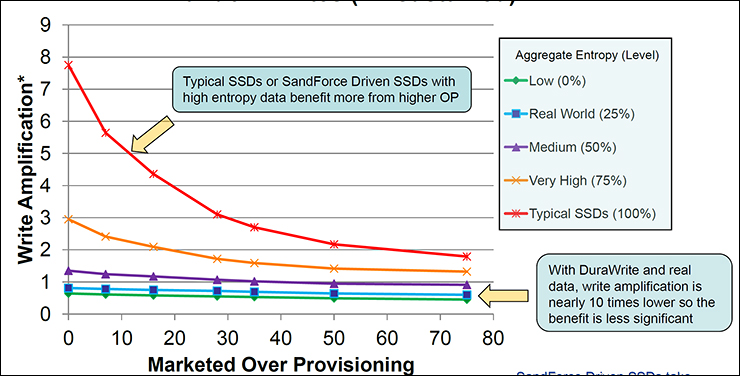
It is complicated because the 125 Pro’s firmware has been tweaked for deeper queue depths and smaller file handling abilities. So if you do not hammer the drive consistently, or your NAS appliance does not typically encounter multiple I/O requests like a SMB NAS / fileserver will… the non-Pro may actually be ‘faster’. It is doubtful anyone will notice a difference on 1Gbit networks, or even 10Gbit networks (all that often), but the differences will be there.
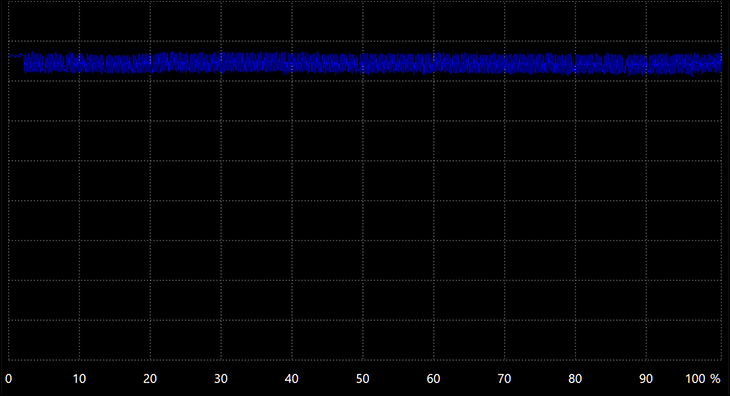
Make no mistake, the standard IronWolf 125 SSD series is no slouch. If it were not for the IronWolf Pro 125 series we would be singing its praises… as it is much more consistent a performer than the average SATA SSD. As you can see the IronWolf 125 is rather consistent in its sequential write performance, but instead of a 15’ish Megabyte variance it is more like 40Mbs(ish). Still phenomenal, but not quite as good as the Pro 125, and as the queue depths get deeper (and / or they keep up longer term) the differences do become greater and greater. At a certain point the standard IronWolf 125 will start to noticeably lag behind the Pro. It just depends on if your NAS will ever hit that ‘saturation point’ often enough to be noticeable. This is doubly true if your network is only 1GbE enabled.
Overall, both models are built to an incredibly high standard and are choke full of innovation. It really will come down to which model has been optimized for your particular needs when deciding which model will be the better value… but both are excellent value options. Color us impressed.




